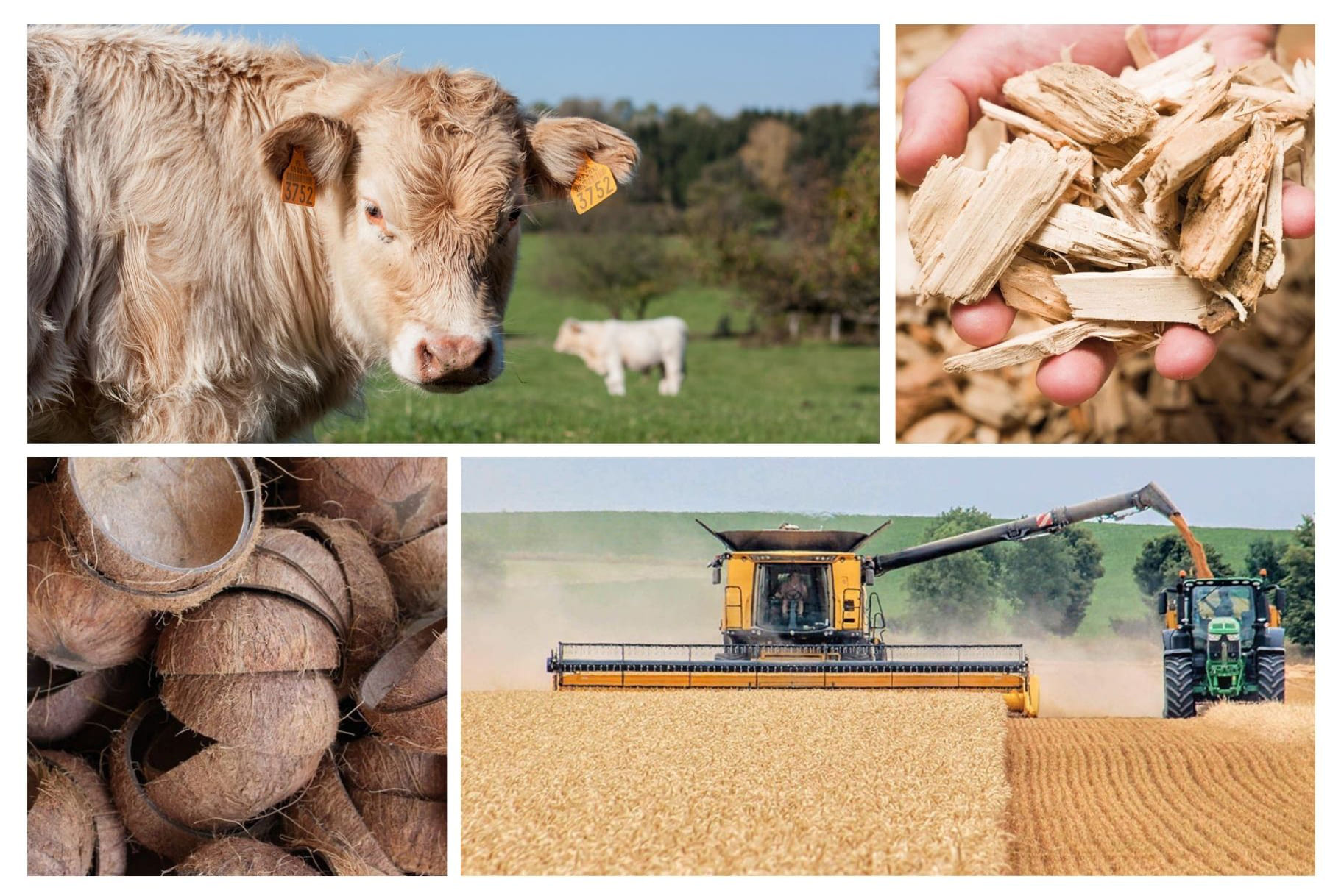What Kind of Feedstocks are Suitable for the Biomass Pyrolysis Plant?
Biomas pyrolysis is the thermal decomposition of biomass that occurs in the absence of oxygen. The pyrolysis equipment are suitable for a wide range of feedstocks, including but not limited to forestry waste, agricultural waste, animals manure and industrial sludge, etc.
.jpg)
.jpg)
.jpg)
In order to meet the diverse pyrolysis needs of customers, Haiqi has specially established a Biomass Feedstock Sample Testing Laboratory. Fully understand the characteristics of feedstock to carry out customized pyrolysis equipment design to provide customers with more accurate and efficient solutions.
As one of the effective means of negative emissions, Haiqi's biomass pyrolysis plant is effectively realizing the secondary utilization of waste and making a positive impact on a more sustainable future.
Depending on the project scale, Haiqi provides large-scale biomass pyrolysis plants and small-scale mobile biochar machines. For medium and large-scale projects, we recommend CNBC series equipment with a feeding capacity of up to 30 m³/h; while for small-scale projects, mobile biochar machines may be a better choice. In addition, we can customize this pyrolysis equipment according to your project needs.
Our pyrolysis plants can process many different classes of biomass feeds simultaneously. But we kindly remind you due to different feed characteristics, the quality of biochar produced vary a lot. Generally, we recommend that you use the single feedstock.
2. What kind of product can be obtained through your pyrolysis equipment? May I know their production capacity?
Biochar, syngas, heat and pyrolysis oil are the main end products. The output has a lot to do with the type of feed. Normally, we recommend that you make a composition analysis on the raw material so that the technical team can calculate accurate data.
Forestry Waste
Forestry residues from forest harvesting are high quality feedstock for biochar, such as branches, stumps, wood logs, barks etc. Of course logs can also be used for biochar production, and some fast-growing tree species such as acacia, bamboo and poplar can provide a stable supply for large-scale biochar production in the long run..jpg)
Agricultural Waste
Another major source of biomass pyrolysis is agricultural waste. This includes any waste or residue produced after crop production or harvesting. For example, rice husks, straw, coconut shells, and nut shells are often used for biochar. More than mere incineration, converting these feedstocks into energy products that can be utilized twice is an effective way of processing these agricultural waste. Through different processes, agricultural waste feedstocks can be converted into many different products, from biochar to green methanol to bio-oil..jpg)
Animal Waste
Animal waste such as manure, bones, feathers and leather can be cracked at high temperature to produce biochar. Biochar from animal substrates can be used as the excellent soil fertilizer due to its high content of nutrients such as phosphorus and potassium. Moreover, pathogenic microorganisms and organic micropollutants in animal waste are eliminated at high temperatures, making it safe to use..jpg)
Industrial Sludge
Oil sludge, printing and dyeing sludge, urban sludge, etc. are also among the raw materials that can be carbonized. One thing to keep in mind is that the composition of industrial sludge is quite complex, and some types of sludge may even contain toxic substances or flammable ingredients. Therefore, you need to conduct strict composition analysis on a considerable proportion of industrial sludge feed samples to understand potential safety risks and avoid production accidents.In order to meet the diverse pyrolysis needs of customers, Haiqi has specially established a Biomass Feedstock Sample Testing Laboratory. Fully understand the characteristics of feedstock to carry out customized pyrolysis equipment design to provide customers with more accurate and efficient solutions.
As one of the effective means of negative emissions, Haiqi's biomass pyrolysis plant is effectively realizing the secondary utilization of waste and making a positive impact on a more sustainable future.
Depending on the project scale, Haiqi provides large-scale biomass pyrolysis plants and small-scale mobile biochar machines. For medium and large-scale projects, we recommend CNBC series equipment with a feeding capacity of up to 30 m³/h; while for small-scale projects, mobile biochar machines may be a better choice. In addition, we can customize this pyrolysis equipment according to your project needs.
| CNBC 500 Pyrolysis Equipment Parameter | |
| Feeding Capacity | 8~10m³/h |
| Biochar Output | 380~500kg/h |
| Main Furnace Material | 304/310S(Customized) |
| Heating Source | Diesel, Natural Gas, Biomass (Syngas), etc |
| By-Products (Optional) | Biochar, wood tar, Wood Vinegar, Heat/Electricity, Carbon Sink, etc |
| Heating Method | Indirect Heating |
| Working Pressure | Micronegative Pressure |
| Structure | Single Drum, Single Furnace |
| Feed Requirement | Particle Size ≤3cm, Moisture Content ≤15%, Materials Easy To Flow |
| System Footprint | 180 m² |
| Emission Standard | EU 2019 |
FAQ
1. Can the pyrolysis equipment only process a single biomass feedstock?Our pyrolysis plants can process many different classes of biomass feeds simultaneously. But we kindly remind you due to different feed characteristics, the quality of biochar produced vary a lot. Generally, we recommend that you use the single feedstock.
2. What kind of product can be obtained through your pyrolysis equipment? May I know their production capacity?
Biochar, syngas, heat and pyrolysis oil are the main end products. The output has a lot to do with the type of feed. Normally, we recommend that you make a composition analysis on the raw material so that the technical team can calculate accurate data.





